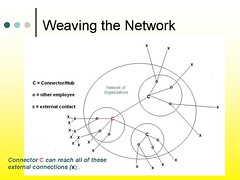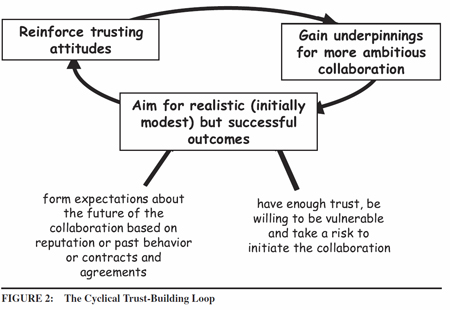Mark Hrywna of the The Nonprofit Times recently published an article titled, “Social Network Fundraising Creating Jobs” reviewing the “Nonprofit Social Network Benchmark Report,” released recently by Portland, Oregon-based Nonprofit Technology Network (NTEN), ThePort Network in Atlanta, and Common Knowledge in San Francisco. During his synopsis of the report, he discusses that when a nonprofit organization employs two full-time equivalency (FTE) staff members to work on social media projects and social networks, they “are more likely to measure return on investment (ROI), describe the investment as ‘very valuable,’ and believe their biggest barrier to doing better is not training or education but more staff.” Those nonprofit organizations utilizing two or more FTE staff are much more likely to be “heavily committed” to exploring and implementing social media strategies than those who employ less FTE’s in allocating time to the burgeoning field of new media. This is a powerful indicator suggesting that as time goes on, for a nonprofit institution, it will become counterproductive to ignore engagement in social networks and new media.
 What is most promising is the sheer amount of thinking surrounding this subject matter. Beth Kanter is one of the most powerful voices in the field today regarding this subject and as such she is a “network weaver.” There are countless others — Katya Anderson, Heather Mansfield, Allison Fine, etc. “Network weavers are people who intentionally and informally – and often serendipitously – weave new and richer connections between and among people, groups, and entities in networks. They also weave new and richer connections between and among networks,” writes Beth Kanter, quoting the Network Weaving Blog. The process of weaving, Valdis Krebs and June Holley suggest, includes 1) knowing the network and 2) knitting the network. Knowing the network involves knowing where you and your organization currently stands as a “node” among many others (essientially mapping the network around you) and analyzing which bonds are strong and which are not as strong. Weavers then take this knowledge and knit a stronger network by creating clusters of actors who are likely to interact and mutually reinforce each other making each collectively stronger than by working alone. The weaver also trains others to become weavers themselves. There is a great deal of collaboration and willingness to share responsibility as well as credit for the results of any of the networks activities.
What is most promising is the sheer amount of thinking surrounding this subject matter. Beth Kanter is one of the most powerful voices in the field today regarding this subject and as such she is a “network weaver.” There are countless others — Katya Anderson, Heather Mansfield, Allison Fine, etc. “Network weavers are people who intentionally and informally – and often serendipitously – weave new and richer connections between and among people, groups, and entities in networks. They also weave new and richer connections between and among networks,” writes Beth Kanter, quoting the Network Weaving Blog. The process of weaving, Valdis Krebs and June Holley suggest, includes 1) knowing the network and 2) knitting the network. Knowing the network involves knowing where you and your organization currently stands as a “node” among many others (essientially mapping the network around you) and analyzing which bonds are strong and which are not as strong. Weavers then take this knowledge and knit a stronger network by creating clusters of actors who are likely to interact and mutually reinforce each other making each collectively stronger than by working alone. The weaver also trains others to become weavers themselves. There is a great deal of collaboration and willingness to share responsibility as well as credit for the results of any of the networks activities.
Using Krebs’ model, there are four stages to building networks:
- Scattered-Emergence;
- Single Hub-and-Spoke;
- Multi-Hub Small-World Network; and
- Core/Periphery
Many nonprofits, I find, find themselves in the scattered-emergence on the cusp of the single hub-and-spoke stage of building a network. Their existence is a solitary existence and much of their activities are organization-centric. Once the foundation is laid on many social networks, staff often seek out new methods and best practices to strengthen their daily activities and find ways to more efficiently achieve their social media strategy. In conducting this activity, they often run into Beth Kanter’s blog or several others. They begin to absorb new insights, gather information and further, begin the process of listening outside of their organizational silo. Once this begins to happen and it can happen at varying speeds, depending on the degree of management oversight of social networking activities, organizational actors or the organizations themselves begin to migrate beyond the founding stages of network building to higher stages. A skilled network weaver identifies opportunities and those who are likely to contribute to the growth of the network and trains them on how to be a better network weaver. These actors turn out to be the hub of a spoke-and-hub model and further they build new networks where they see a need for one and venture to the periphery to better strengthen the loose bonds of the network. This is all a process of collective education and in turn, the network weaver may gain from collective collaboration personally. The skilled weaver however, must acknowledge the cyclical trust-building process as a part of this modeled approach. Risk-averse behavior such as credit claiming, power plays and power games will disrupt power equivalencies and work to upset the balance that a network weaver is working to establish.

Much of this discussion is beyond the scope of the article that brought this discussion to mind, but I make a point to bring it up because there are many nonprofits who are concerned with their brand and their appearance in society that these organizations are all to unwilling to share information, best practices and insights unless they can claim all the credit for any benefit it brings to other organizations or people.
The reality of social networking is that relationship building is a key characteristic to the activity. Organizations must trust that the person employed in social networking activities will say the right things, make the right connections with evangelicals for the organization’s cause and even inspire other evangelicals to recuit more supporters to the cause. Watering this thought down, it’s a process of letting go and trusting that public supporters will work on behalf of the organization to help them achieve their mission.
It is my belief that the degree of trust that an organization has, both for the staff employing social media strategies and to which they grant the public to help them achieve their mission is what contributes to the decision of whether or not to engage in social media activities at all, let alone how much staff FTE’s to allocate to such activities. I am certain that there are other factors that come into play.
Trust isn’t the only factor, but it is a very important factor when considering the big picture of whether to engage the new media space. The end-goal, for me, is creating true, measurable social change, building social capital and making a difference in society. Of course we need to sustain our organizations to make it through another year, but without the help of supporters, those whom social networks facilitate relationship building efforts, all we are doing is following a bottom-line of survival and we are ignoring our missions to solve a given problem facing society.
It is my hope that we find many more network weavers emerging in this space in the near future and that this report encourages more nonprofits to step into this space with a “Listen, Learn, Adapt” mindset.
Works Cited
Krebs, V. a. (2005). Building Adaptive Communities Through Network Weaving. Nonprofit Quarterly, 12 (4), 66-72.
Vangen, Siv and Chris Huxham (2003). Nurturing Collaborative Relations: Building Trust in Interorganizational Collaboration. Journal of Applied Behavioral Science, 39 (5), 5-31.
» For further reading about how to make an impact, online and offline please pick up “Forces for Good: The Six Practices of High-Impact Nonprofits” by Leslie R. Crutchfield and Heather McLeod-Grant (2008). These six practices are truly something to strive for in the nonprofit space, including the new media space where nonprofits are active.













Recently, I came across an article written by Allison Fine for the Case Foundation (http://www.casefoundation.org) entitled, “What is a nonprofit network builder?” (http://bit.ly/cGBatw). This article has a lot of fantastic insight regarding the issue of network weaving.
To be a successful network weaver, write Ms. Fine, one needs to be engaging in all, if not many of these characteristics:
* Listen;
* Be a tech steward;
* Tell stories;
* Provide individual technical assistance;
* Educate and coach their board members;
* Facilitation; and
*Relationship building with supporters externally.
Many of these characteristics and activities describe activities a network weaver can implement to be a better network weaver. Just as much as the professional nonprofit community, the public and those internal to the organization are a part of the activity a network weaver must work with, so is the organization's board of directors. If anything, they give sign off on the importance of the activity and at most, they should be active participant in the activity themselves. The impact a nonprofit organization can make by implementing many of these activities is quite possibly invaluable in the long run.
What do you think? Are each of these characteristics important to hold in the network weaver's toolkit?
For more, read the article by Ms. Fine at the Case Foundation Web site:
http://bit.ly/cGBatw